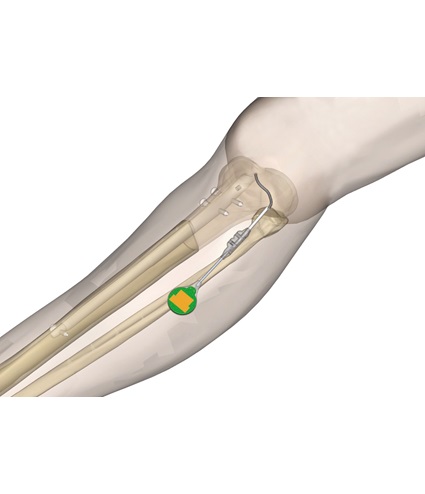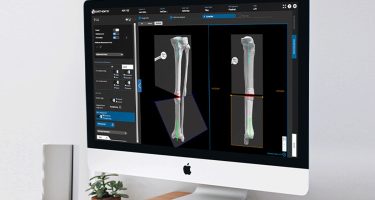Fitbone™ Intramedullary Lengthening System
THIS INFORMATION IS FOR HEALTHCARE PROFESSIONALS ONLY
THIS INFORMATION IS FOR HEALTHCARE PROFESSIONALS ONLY

Lengthening and alignment correction of the Tibia
| * Nail and screw sizes are dependent on patient anatomy * | ||
| Q.ty | Catalogue N. | Description |
|---|---|---|
| 1 | TAA1160-T-225
|
TAA1160-T-225 FITBONE INTRAMEDULLARY LENGTHENING NAIL |
| 1 | 60000567
|
FITBONE LOCKING SCREW D4.5 L55 LONG THREAD |
| 1 | 60000369
|
FITBONE LOCKING SCREW D4.5 L50 LONG THREAD |
| 1 | 60000365
|
FITBONE LOCKING SCREW D4.5 L30 LONG THREAD |
| 1 | 60001780
|
FITBONE SUBCUTANEOUS ENERGY RECEIVER |


(a) Short tibia; LRS ADVanced (53000 series) in place; metaphyseal osteotomy performed. (b) Monofoc...
Read More(a) Very short tibia. LRS ADVanced (53000 series) in place; proximal and distal osteotomies. (b) Si...
Read More(a) Very short tibia. LRS ADVanced (53000 series) in place; proximal and distal osteotomies. (b) Si...
Read More(a) Short tibia. Intramedullary nail in situ. Locking screws proximally, only. Midshaft osteotomy. L...
Read MoreFoot and Ankle Charcot Reconstruction with External Fixation
Surgical reconstruction of foot and ankle Charcot with external fixation is especially useful in the presence of poor bone quality,Read MoreExpert Tips on How to Medically Diagnose Charcot Arthropathy
The diagnosis of Charcot neuroarthropathy of the foot and ankle can be challenging due to a lack of information inRead MoreThis website is reserved only for Healthcare Professionals and their staff. Therefore, the access to these information is denied to non professional audience.